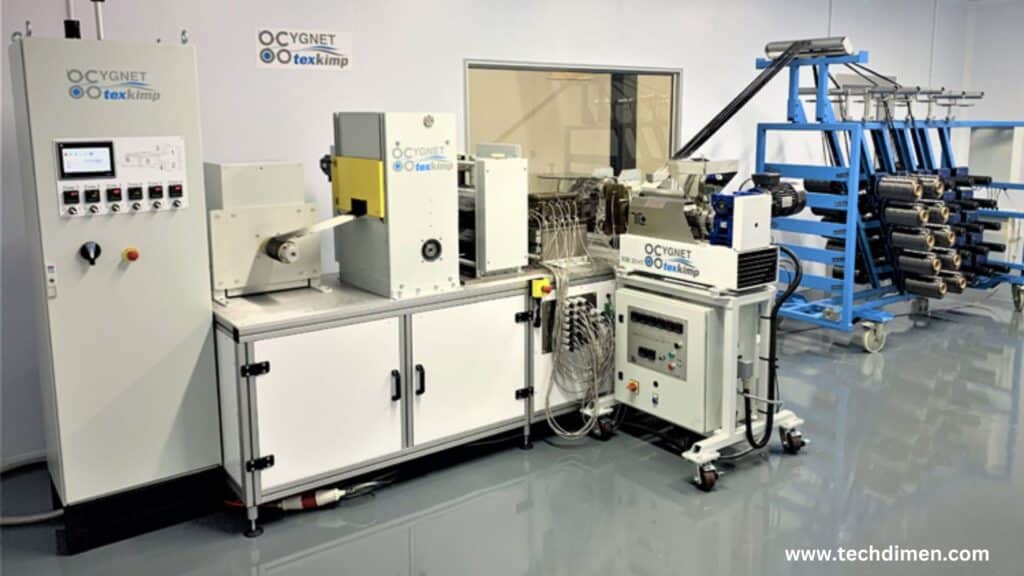Converting technology is the invisible force powering much of the digital experience today. From data formats to physical energy systems, these tools work silently to ensure compatibility, improve efficiency, and drive innovation. Whether it is file converter software, smart energy conversion systems, or automated data transformation engines, converting technology plays a crucial role across every industry.
the Fundamentals of Converting Technology
At its core, converting technology encompasses any method, tool, or system that changes one type of input into another. This could mean turning a PDF into a Word document, converting a CSV into a JSON file, or transforming solar energy into electricity. These technologies make it possible for data, formats, and energy to be used across different platforms, devices, or environments without manual intervention.
Historically, converting technology has evolved from basic mechanical systems to AI powered software platforms. In the 1980s, analog media like VHS tapes needed to be converted to digital formats like DVDs. By the 2000s, software enabled users to convert files such as MP3s and PDFs with ease. Today, cloud native tools powered by AI and edge computing allow for this time conversions across multiple formats with minimal user input.
Everyday applications of converting technology are abundant. Uploading a video to YouTube often involves automated transcoding. Sharing files across mobile and desktop devices requires file format compatibility. Even changing programming languages for app development involves code format converters.
Categories of Converting Technology

Digital format converters are among the most commonly used. They transform documents, images, videos, and audio files to ensure compatibility. Popular examples include converting Word documents to PDFs, resizing images, or changing video codecs for smoother playback. These tools help reduce file size, enhance accessibility, and ensure that content can be accessed across different platforms.
Media converters play a critical role in industries like entertainment, education, and digital marketing. Applications such as HandBrake and Shutter Encoder allow users to transcode video files, add subtitles, and compress content for faster loading. This reduces bandwidth usage and ensures smoother streaming experiences. Media transcoding tools also support features like subtitle embedding, frame rate adjustments, and lossless compression, making them essential for professional media workflows.
Data and code transformation technologies support backend infrastructure. These tools help convert datasets between different formats, such as CSV to JSON, or transform REST APIs into GraphQL structures. Developers use code format converters to migrate code between programming languages, adjust syntax, or optimize for performance. Low code platforms and automation engines enable seamless integration across different software ecosystems.
Energy conversion technology represents a different dimension of converting systems. These technologies transform solar, kinetic, or thermal energy into electricity for use in homes, electric vehicles, and industrial applications. For instance, regenerative braking systems in electric vehicles convert kinetic energy into stored electrical power. Similarly, thermal storage systems convert excess heat into usable energy during high-demand periods. These systems are crucial for sustainability and efficient energy management.
In manufacturing and engineering, converting technology includes voltage transformers, 3D format converters, and systems that integrate with IoT sensors to ensure in this time compatibility. These smart conversion tools automate machine to machine communication and reduce human error.
Industry Applications of Converting Technology

In healthcare, converting technology powers image to text optical character recognition (OCR), helping medical professionals digitize handwritten records. DICOM to JPEG converters allow medical images to be shared more easily, while secure document conversion tools ensure compliance with privacy regulations like HIPAA.
In the finance and enterprise sectors, converting technology simplifies data migration, report automation, and format standardization. Companies rely on conversion tools to move data from legacy systems to modern platforms without compromising accuracy. APIs are used to convert financial data formats across systems, while batch conversion software processes large volumes of information.
Manufacturers use CAD to CAM converters to transform engineering designs into machine readable formats. IoT telemetry format converters enable in this time monitoring of equipment. Enterprise resource planning (ERP) systems rely on converters to integrate data from various modules and external sources.
Education and media sectors benefit from converting video content into multiple resolutions and formats. Media compression software reduces file sizes without compromising quality, making content easier to distribute across different learning platforms. These tools also help optimize instructional materials for accessibility and device compatibility.
Leading Tools and Technologies in the Market

CloudConvert is a widely used online file converter known for its drag and drop functionality and support for over 200 formats. Zamzar is another tool that handles documents, images, and media files with a clean interface. HandBrake stands out as a professional grade open source video transcoder that offers granular control over video quality, bitrate, and resolution.
Smallpdf is a popular choice for document conversion, offering secure and GDPR compliant tools for converting PDFs to Word, Excel, and PowerPoint. Convertio combines AI powered file recognition with OCR technology, making it ideal for complex document transformations. Shutter Encoder is favored by video editors for its professional features and efficient workflow integration.
Benefits of Converting Technology

One of the most significant benefits is automation. Automated format detection eliminates the need for manual input, saving time and reducing errors. These tools also enable time conversion across devices, making it easier to work on the go.Optimizing storage is another advantage. Media transcoding and file compression allow users to reduce file sizes, saving bandwidth and improving load times. This is especially critical for streaming platforms and mobile applications.
Converting technology also improves cross platform compatibility. Files and formats converted into universal standards like PDF/A, MP4, or UTF-8 can be used across different operating systems and devices without compatibility issues.
Challenges in Implementing Converting Technology
Despite its benefits, converting technology presents several challenges. One common issue is file corruption or data loss. This can occur when tools do not preserve metadata or fail to handle complex formatting. Choosing reliable software with built-in preview features and backups is essential.Data privacy is another concern. Converting tools that process sensitive information must comply with data protection laws. Using cloud native tools with encryption and offline alternatives for confidential files is advisable.
Compatibility issues can arise when using niche or outdated formats. Relying on tools that support universal file formats and include validation mechanisms helps mitigate this risk. AI powered converters should always be reviewed manually, especially for code or legal documents, as they may miss contextual details.
Emerging Trends and Future Outlook

Artificial intelligence is redefining converting technology. AI driven conversion engines can automatically tag files, recognize language and content, and even optimize outputs based on usage patterns. These systems drastically reduce the time and labor required for file conversion.Edge computing enables real-time conversion without relying on cloud infrastructure. This is especially useful for IoT devices, which can process and convert data locally, reducing latency and improving responsiveness.
A significant trend is the development of universal format engines. These aim to standardize file formats across devices, platforms, and applications, reducing the need for repeated conversions.
Blockchain is also entering the space. It allows for the verification of file integrity post conversion. This is particularly valuable for industries like law, academia, and government, where document authenticity is critical.
Selecting the Right Conversion Tool
Choosing the right tool depends on your specific needs. For general purpose file conversion, CloudConvert and Zamzar offer ease of use. HandBrake and Shutter Encoder are better suited for media professionals. Developers may prefer Code Beautify or Postman for data and code transformation.Speed and accuracy vary by platform. CloudConvert offers fast and highly accurate conversions with an intuitive interface. Zamzar provides a balanced solution for casual users. HandBrake is designed for those who require precision and advanced options.
Offline tools are ideal for sensitive or private data, as they don’t require an internet connection and offer greater control over the process. Cloud-based tools, however, are more convenient for everyday tasks and collaborative workflows.
Overview Table: Converting Technology in 2025
| Category | Function | Examples | Tools & Technologies |
|---|---|---|---|
| Digital Format Conversion | Converts one file format to another | PDF to DOCX, CSV to JSON, TXT to EPUB | CloudConvert, Zamzar, Smallpdf |
| Media Conversion | Transforms audio, video, and image files | MP4 to WEBM, JPG to PNG, WAV to MP3 | HandBrake, Shutter Encoder, Any Video Converter |
| Code & Data Transformation | Converts data structures or programming languages | XML to JSON, TypeScript to JavaScript, SQL to CSV | CodeBeautify, Postman, AI-powered transpilers |
| Energy Conversion | Changes one energy form into another | Solar to electrical, thermal to mechanical, kinetic to electric | Solar panels, TES systems, regenerative braking tech |
| Industrial Converters | Physical devices that convert mechanical or electrical properties | Voltage adjustment, 3D format printing, signal transmission | Voltage transformers, CNC converters, signal adapters |
| AI-Based Conversion | Uses machine learning to adapt and optimize format changes | Smart file formatting, real-time code refactoring, language switching | GPT-based tools, AI translators, automated compression engines |
| Edge & Real-Time Systems | Performs conversion instantly on local or low-latency devices | IoT data handling, local media re-encoding, on-the-fly format changes | Edge computing platforms, real-time transcoding tools |
FAQs
What Is Converting Technology?
Converting technology refers to tools, systems, or devices that change one form of file, data, code, media, or energy into another. It powers everything from file format changes to energy conversion in smart homes and industries.
Why Is Converting Technology Important in 2025?
In today’s hyper digital world, converting technology helps bridge platforms, devices, and systems. It enables compatibility, reduces friction in workflows, saves time, cuts storage needs, and supports energy efficient innovations.
What Are the Main Types of Converting Technology?
Converting tech includes several core categories. Digital format converters handle files like PDFs or spreadsheets. Media converters work with audio, video, or image formats. Energy converters transform sources like solar or kinetic energy into usable power. Code and data converters restructure programming languages and database formats. Hardware converters adapt voltage, signal, or mechanical functions.
How Do File Conversion Tools Work?
These tools decode the source format, process its structure, and rebuild it into the desired output format. Some advanced systems use artificial intelligence to enhance precision, adjust formatting automatically, and preserve data integrity.
Are Online File Converters Safe to Use?
Online tools are generally safe when sourced from trusted providers. Look for secure HTTPS connections, no file retention policies, and privacy compliance (like GDPR). If you’re handling sensitive files, using an offline tool is the safest route.
Can AI Convert Code or Content Accurately?
Yes, AI can now convert code between languages and formats with impressive accuracy. It also helps automate file formatting, detect context, and maintain quality in content transformations.
What Are the Common Challenges of Conversion Technology?
Issues can include corrupted files, poor formatting, compatibility problems, or privacy concerns. AI may misinterpret complex inputs. These risks are manageable by choosing high quality tools, previewing outputs, and encrypting sensitive data.
How Is Converting Technology Used Across Industries?
Every industry uses it differently. Healthcare converts medical images like DICOM into JPEGs. Finance automates file changes for reports and analytics. Manufacturing relies on CAD conversions. Media producers reformat video and audio. Education platforms adapt files for mobile, desktop, and online classrooms.
What Are the Future Trends in Converting Technology?
Emerging trends include AI powered smart converters, time processing through edge computing, universal format engines, and blockchain-protected conversion logs. These developments aim to make conversion faster, more secure, and universally compatible.
Is Cloud-Based or Offline Conversion Better?
Cloud based tools offer convenience and access from any device, often with more features. Offline converters provide more speed, greater privacy, and don’t require internet access. The right choice depends on your use case.
Can Conversion Tools Reduce File Size Without Losing Quality?
Yes. Modern tools use lossless compression techniques that maintain visual or audio quality while significantly reducing file size ideal for media, cloud storage, and mobile devices.
Final Thoughts
Converting technology is no longer a niche toolset but a core component of digital infrastructure. It enables seamless workflows, efficient energy use, and universal access to data and media. Whether you are a developer, educator, content creator, or business professional, mastering the use of digital conversion tools is essential for staying competitive.
From AI file converters and media transcoding tools to energy systems and code format engines, converting technology continues to evolve. Staying informed and adaptable is the key to leveraging its full potential in 2025 and beyond.In today’s increasingly interconnected world, converting technology has become the silent powerhouse behind seamless communication, smart infrastructure, and digital efficiency. From transforming file formats to converting renewable energy into usable electricity, these tools serve as the critical enablers of digital transformation.

Jhon AJS is a tech enthusiast and author at Tech Dimen, where he explores the latest trends in technology and TV dimensions. With a passion for simplifying complex topics, Jhon aims to make tech accessible and engaging for readers of all levels.







